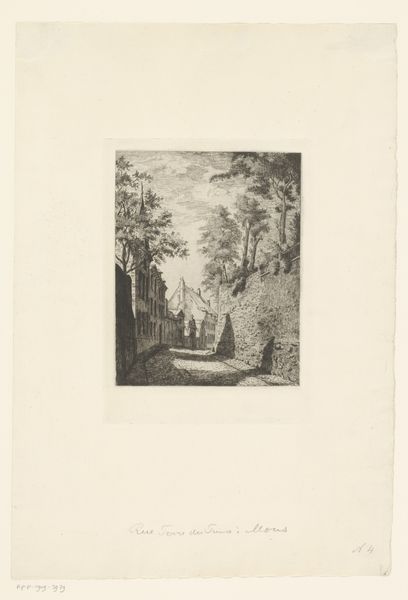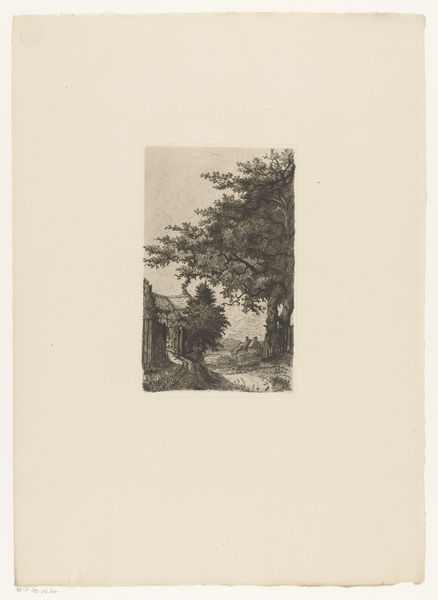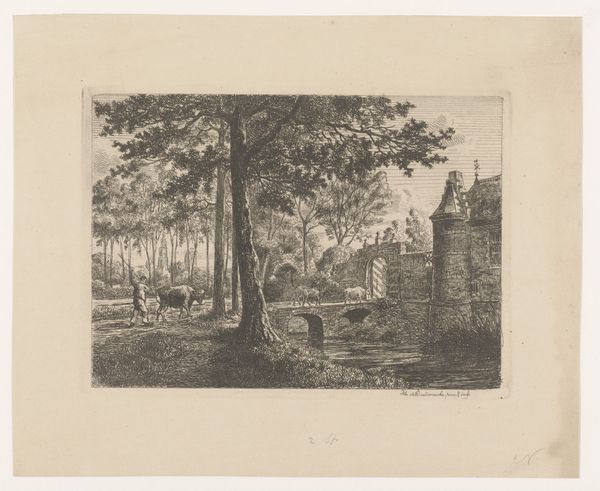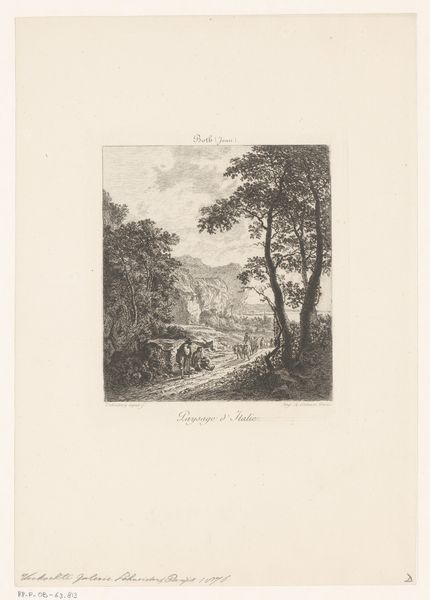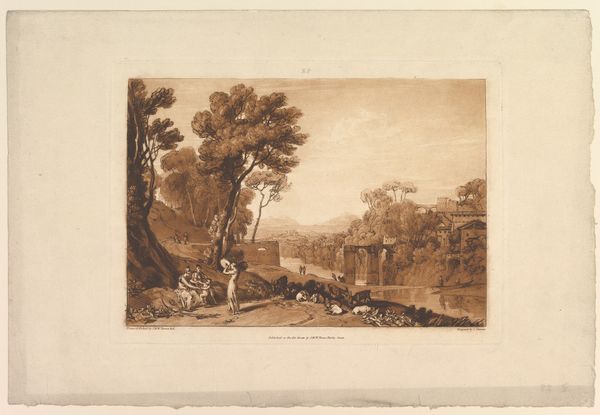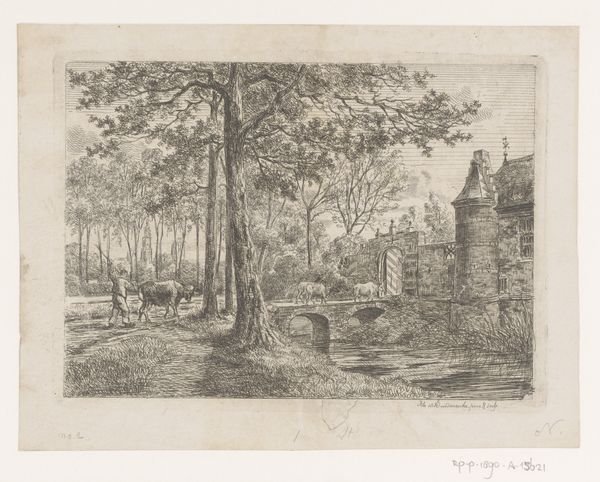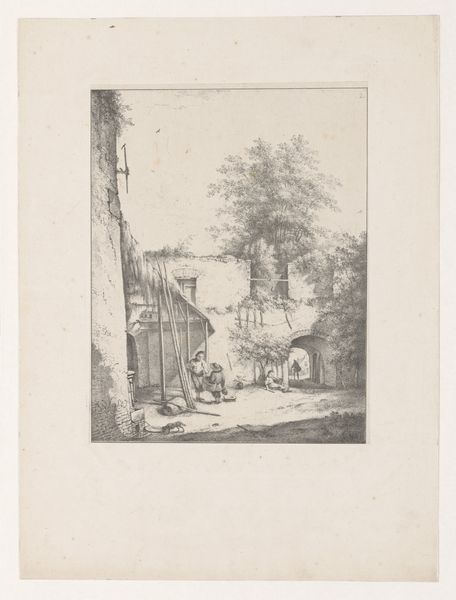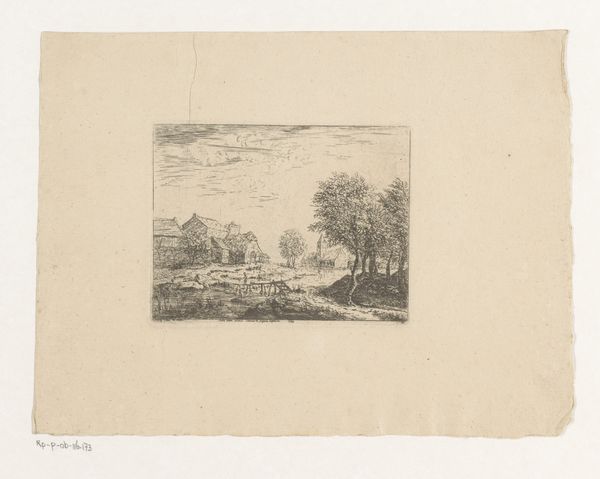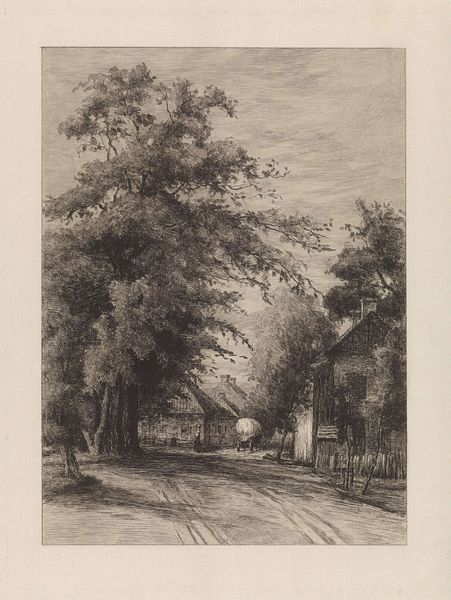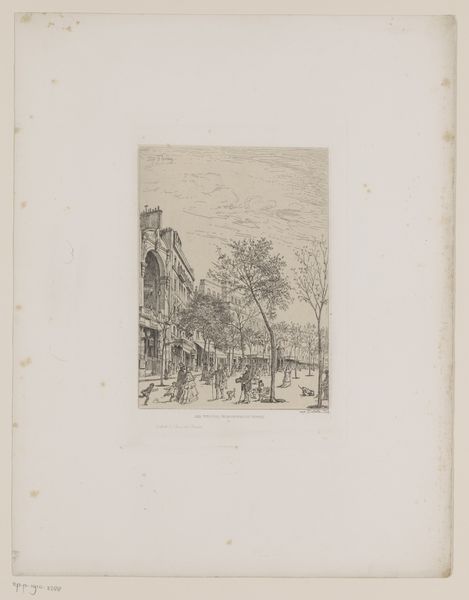
Gezicht op Rue terre du Prince en de oude wal van Boudewijn IV te Mons 1847 - 1902
0:00
0:00
leondolez
Rijksmuseum
drawing, print, etching
#
drawing
# print
#
etching
#
landscape
#
cityscape
#
street
#
realism
Dimensions: height 230 mm, width 167 mm
Copyright: Rijks Museum: Open Domain
Curator: Immediately striking, isn't it? This etching possesses an arresting quietude. Editor: It does have a compelling stillness. Something about the quality of light on the stone. Curator: That texture is beautifully rendered through the etching process, and the architectural details meticulously crafted. We are viewing L\u00e9on Dolez’s “Gezicht op Rue terre du Prince en de oude wal van Boudewijn IV te Mons”, placing us on a street in Mons, sometime between 1847 and 1902. The Rijksmuseum is fortunate to have it in its collection. Editor: Before delving into the history, can we just consider what the etcher wants us to feel, given the weight given to building materials? Note the formidable presence of that weathered stone wall, counterpoised by the street stretching into the receding town center. The cobblestones even speak of countless footsteps. Curator: I agree. And this vista becomes a social record. The Prince's Land Street would have held different meaning depending on one’s social positionality at the time. Gender and race, alongside economic factors, would define lived experiences. I am drawn to consider whose stories are absent. Who did this space not afford visibility? Editor: That's a solid critique, and, looking again at the process of its creation, etching, being indirect, relies heavily on acid, wax and metal for its affect. One wonders about the industrial developments that allowed Dolez to have such facility, and, therefore, we might see the social record a bit differently: less focused on absent figures and instead on class power as encoded in the street itself. Curator: I see your point. The infrastructure –the literal bedrock on which this street and its social relations exist– reflects larger systems of power. A feminist lens helps to remember we can consider absence as a defining feature that reflects real dynamics. Editor: Indeed. Examining the labor and materials invites questions of who benefited and who was possibly displaced in the construction of this cityscape. Curator: Ultimately, what resonates most is how art invites dialogue across different modes of thought, helping us appreciate the nuances of our shared history. Editor: Exactly. And how this print acts as a material witness. Thank you.
Comments
No comments
Be the first to comment and join the conversation on the ultimate creative platform.
